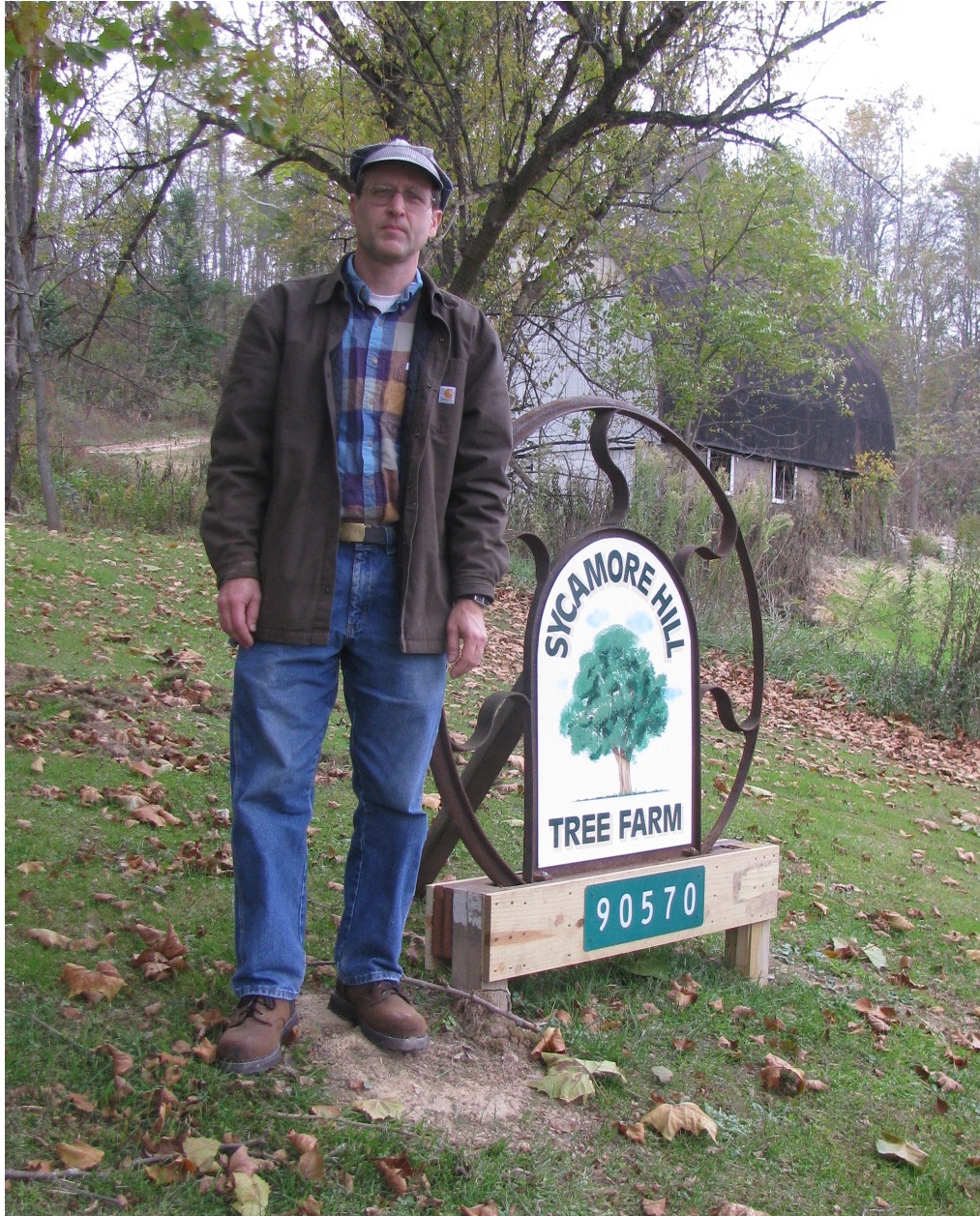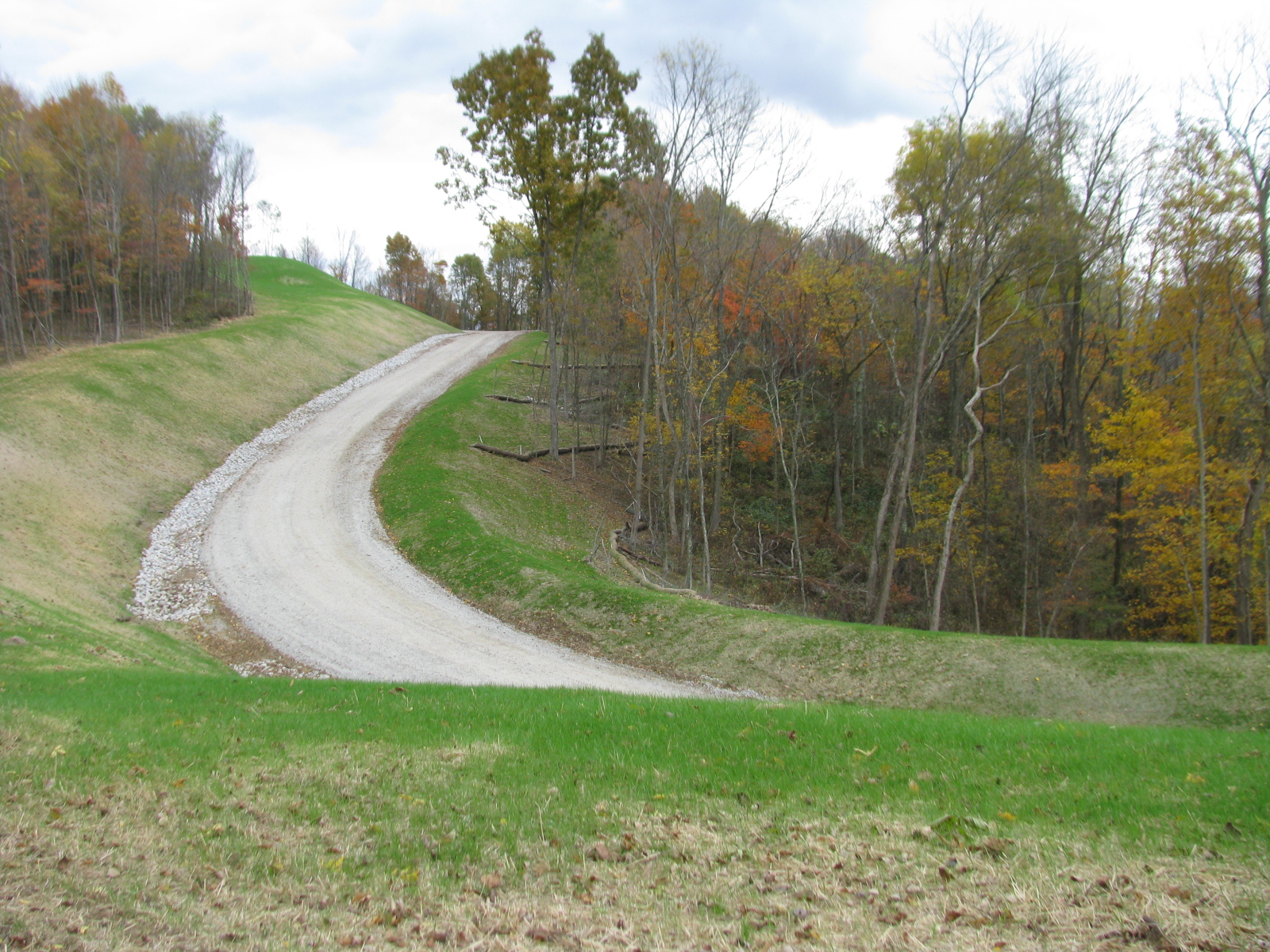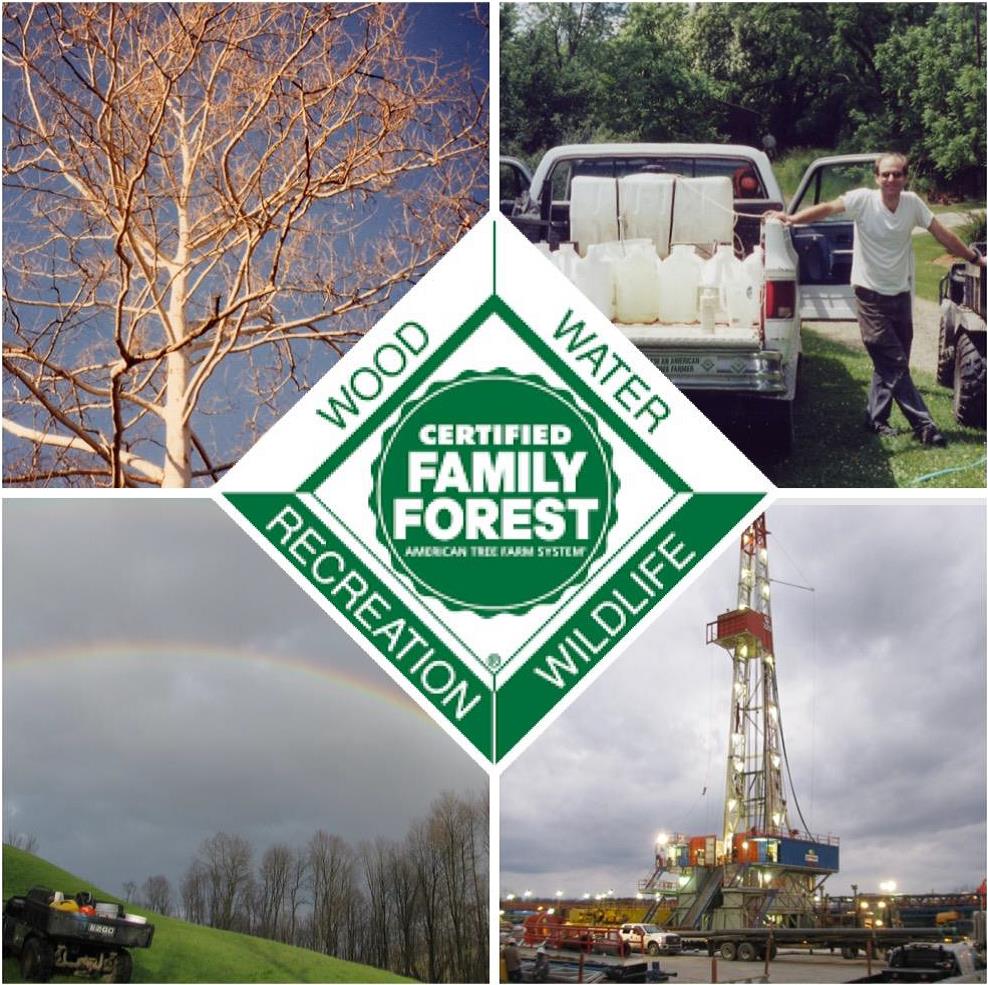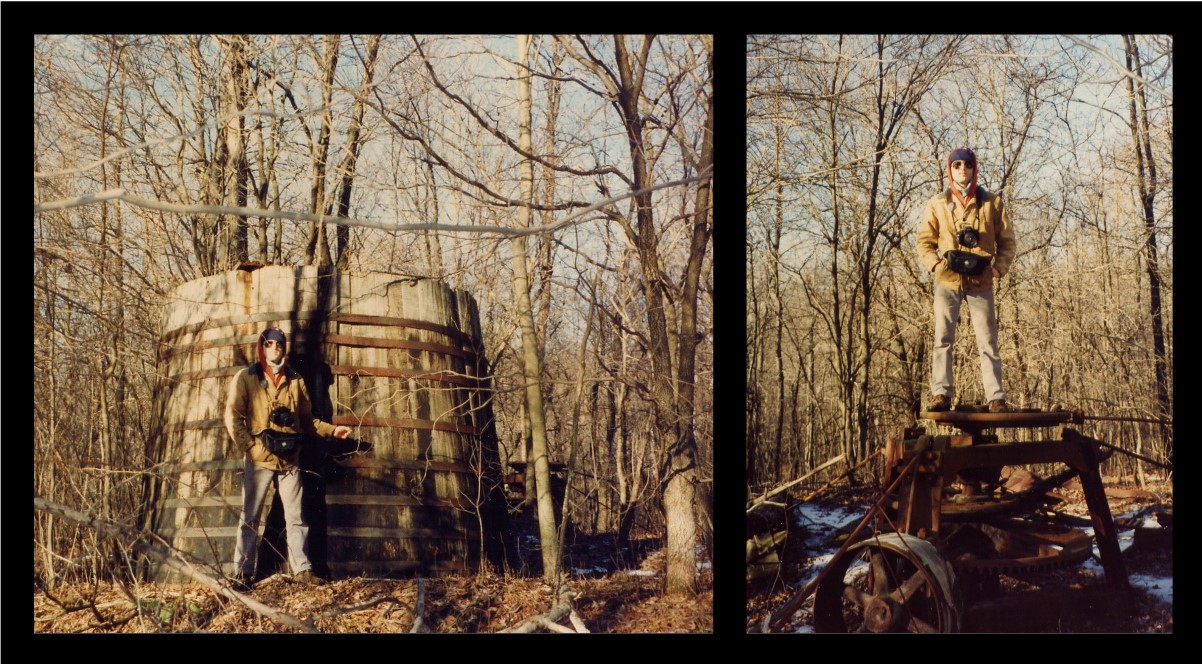Alan Walter from Ohio

What makes them outstanding?
When you think about TFOTY, you think about the outstanding forestry work the landowner has done. Alan certainly fits that mold. What you don’t often think about is what they have done to promote forestry, and this is what sets Alan above the rest. While he has meticulously managed his property, he also spent a huge amount of time spreading the good word of forestry. His involvement with the local landowner group reaches hundreds of landowners, much of which is due to his involvement. He also regularly invites landowners curious about forestry out to his farm to meet with them one-on-one, and share his knowledge with them.But it goes on. His interest in wildlife, mainly non-game species, is unique among his peers. He has huge interests in the birds, snakes, turtles, bats, salamanders, and other often less-noticed wildlife species. And he has made great strides improving habitat for them.Most recently, it has been his interaction with the booming oil and gas industry. The oil shale boom has had major impacts in our region, but Alan found a way to get the industry to recognize the importance of his forestland, and worked with them to find a compromise that allowed a 3-acre well pad and 11-acre access road “ a 14-acre reduction in his forest” to become an improvement to the property. It gave him access for futurelogging operations, created a large opening that he did not otherwise have for wildlife, and gave him an opportunity to plant trees and shrubs to reclaim the road banks. It helps to remind us that the scars from over 100 years ago are still visible, which gives us thought about how we interact with today’s oil boom.
Tree Farmer Story
 Alan Walter purchased 150 acres of woods in 1990, basically having no goals except a vague sense that “land ownership is good.” He wanted a place to mushroom hunt with his dad and to “protect trees.” Having had no idea what to do with the land to “protect it,” he turned to the telephone book and started calling any organization which seemed to have anything to do with land management. He started with the local Ohio State University Extension and Soil and Water Conservation District offices and basically said, “I’ve bought some land. I like nature. What should I do now?” He was amazed at the amount of free, worthwhile advice that was available and how he could put some of his taxpayer funds to use. Each person he talked to told of other agencies which could be utilized and it wasn’t long before he had farm visits from employees of the Ohio Department of Natural Resources Divisions of Wildlife and Forestry, and was signed up for a couple cost-share programs to do tree planting and grapevine control.
Alan Walter purchased 150 acres of woods in 1990, basically having no goals except a vague sense that “land ownership is good.” He wanted a place to mushroom hunt with his dad and to “protect trees.” Having had no idea what to do with the land to “protect it,” he turned to the telephone book and started calling any organization which seemed to have anything to do with land management. He started with the local Ohio State University Extension and Soil and Water Conservation District offices and basically said, “I’ve bought some land. I like nature. What should I do now?” He was amazed at the amount of free, worthwhile advice that was available and how he could put some of his taxpayer funds to use. Each person he talked to told of other agencies which could be utilized and it wasn’t long before he had farm visits from employees of the Ohio Department of Natural Resources Divisions of Wildlife and Forestry, and was signed up for a couple cost-share programs to do tree planting and grapevine control.
At the time of purchase, Alan was completely naive that the forest had been badly high-graded by past harvest practices. Not only had the best trees been taken and the worst trees been left, but there had been an explosion of grapevines, which were inundating the remaining trees. He spent 10 years of weekends and vacation time eliminating the severe grapevine infestation (approximately 1000 man-hours). Ironically, the increased sunlight which then reached the forest floor caused an unexpected explosion of invasive species (primarily multiflora rose, bush honeysuckle and privet) no doubt aggravated by the decades of dormant seeds accumulating in the droppings of birds visiting the grapevines. Knocking that infestation back from an 8 on a 1-10 scale to under a 1 took another 8 years of work which exceeded 2000 man-hours.
During that time Alan was a card-carrying Greenpeace member and definitely a tree hugger who felt that cutting trees was evil. His state forester kept encouraging him to attend meetings of the East Central Ohio Forestry Association but he resisted since he assumed the meetings would be for “tree cutters.” Eventually a couple of the meeting topics were too interesting to miss, though, and he has never looked back since! Alan has attended hundreds of educational classes and field days across the tri-state area plus 14 national tree farmer conventions including many pre- and post-tour field trips.
Forestry Association but he resisted since he assumed the meetings would be for “tree cutters.” Eventually a couple of the meeting topics were too interesting to miss, though, and he has never looked back since! Alan has attended hundreds of educational classes and field days across the tri-state area plus 14 national tree farmer conventions including many pre- and post-tour field trips.
Owning the same piece of land for 25 years, while spending so much time in the woods doing hands-on work while aggressively pursuing education to make himself a better land steward, has been very rewarding for Alan. He has greatly improved his nature-observation skills. He has watched the forest mature and has witnessed how management techniques that he implemented have redirected the forest’s evolution for the positive.
In 2013 Alan implemented two management techniques that were unthinkable to him in 1990: He had a consultant-conducted 246,000 board foot timber sale and he personally created a 3.5-acre clearcut! The timber sale was very puzzling to the bidders because his goal was unusual: undo the damage of past poor forestry practices while enhancing the growth of future veneer-quality trees. Making money NOW was WAY at the bottom of his list of goals, so he and his forestry consultant left hundreds of trees that the loggers were salivating over. He’ll cut those trees in 20-30 years when they are veneer-quality and more mature.The clearcut was an entirely different situation. Please see the “Wildlife” section below for an explanation of the motivation behind it. He did all the work himself and aggressively marketed all the byproducts. Alan sold sawlogs, hundreds of fenceposts and hops trellis posts, plus multiple loads of firewood which ended up netting him 5 times the profit on a per-acre basis than the 2013 timber harvest! It was really impressive the way he took what seemed to be a stand of firewood with little marketing potential, and found markets for a wide variety of the material.
Another totally unanticipated outcome for Alan of his forest ownership was his interaction with the oil and gas industry when the Utica shale drilling boom hit eastern Ohio. Very reluctantly, he ended up with a 3-acre well pad that actually resulted in the loss of 14 acres of trees because of the scope of the access road created across difficult terrain. Throughout the planning and construction phase he consistently and unceasingly reminded all the parties that tree farming was both his passion and vocation (since he’d retired from his day job by then). Chesapeake Energy was the leaseholder and could not have been a better partner to work with. They listened to his concerns, adjusted their pad and road design to accommodate them wherever possible, and explained the constraints they were working within so he could understand their decisions. The engineering and the construction of the pad and road are phenomenal, and it is no exaggeration to say that his well pad road is higher quality than most of the township roads in the county. It, alone, will significantly increase the price he will receive at the next timber harvest because the log trucks will now be able to drive one-half mile into the woods versus having no truck access in 2013.
Alan has been extremely gratified that many of the oil industry representatives who have visited his property have realized that there is something unique about it. They uniformly comment “You have a beautiful property” and notice the effects of the careful management that he has performed.
Alan’s take-home message to everyone would be: You can achieve multiple goals simultaneously while managing a woodland. You can make money while still having a beautiful woods to enjoy.

Wood
Due to self-education and field trips to other Tree Farms (including Regional and National Tree Farmer of the Year farms) Alan’s attitude about woodland management has COMPLETELY changed over the course of 25 years. He went from being a preservationist who never planned to own a chainsaw to someone who performed his own clearcut! He’s witnessed firsthand the dramatic effects that good management has on speeding up the growth of the best quality trees on his property. By girdling the lower quality trees he has created habitat for a wide variety of wildlife while enhancing the growth of the best trees.
Although Alan lost 14 acres of trees due to the oil well pad construction, he immediately began replanting the road banks. He planted 2000 red oak acorns plus 3800 shrubs because that was a way to jumpstart natural succession, speeding up the process by at least a decade over what would have occurred naturally. He also used that event as an opportunity to add bur oak to his property on a site where it should thrive.
The most recent challenges have been a devastating incursion of emerald ash borer and a microburst (similar to a mini-tornado) that totally flattened 1 acre of 20 DBH sawlogs and heavily damaged another 1 acre. The microburst occurred 2 months before his Ohio Tree Farmer of the Year field day so he used it as an opportunity to showcase that a tree farmer’s crop has 60-100 years of perils to overcome before harvest. Theemerald ash borer infestation is less dramatic but, ultimately, will be equally destructive. Alan plans to underplant this area with sugar maple and black oak seedlings.
Water
There is limited opportunity to do much water-related enhancement activity on this tree farm due to its ridgetop location. However, there is one wet seep so Alan intentionally placed the 3.5 acre clearcut near it after consultation with Wildlife Management Institute personnel since they noted the seep would be attractive to woodcock. There is one very small pond which was left over from oil drilling activity in the 1970’s. Alan’s game camera photographed a male wood duck visiting the pond in Spring 2015 so he erected a wood duck box in hopes of attracting a pair next year.
Alan is strongly committed to integrated pest management (IPM) constantly scouting for invasive species so that they can be eliminated before they get established, setting thresholds where pests can be tolerated without any chemical control, using the least amount of chemicals at the most effective time of the year to minimize other impacts. (Example: he hand-pulled 5000 ailanthus seedlings that germinated in 5 acres after the 2013 timber harvest because he felt that would be more effective and more environmentally benign than a herbicide application.) Alan spends about 2 weeks every year re-scouting his property to hand-pull any invasive species before the infestations get too large. When he does use herbicides, he follows the labels.
Alan, of course, required the loggers to follow our state’s BMP’s during his 2013 timber harvest. Chesapeake truly exceeded the state BMP requirements when building the oil well pad. They installed 1.25 MILES of silt sock before any earthmoving began and repaired any tears as soon as they occurred. I’m confident that not even one wheelbarrow’s worth of soil left his property despite over 70,000 cubic yards being moved to build the well pad and access road!
Wildlife
During his 25 years of farm ownership, ruffed grouse disappeared. Through education and observance Alan realized it was because the habitat matured beyond what was ideal for them. He also learned that early successional habitat was becoming somewhat imperiled in Ohio so he committed to doing a clearcut on a corner of his property. After consulting with multiple experts he settled on 3.5 acres being the maximum amount that he could tolerate but be large enough to provide wildlife benefits. Incredibly, his goals of improved early successional wildlife habitat were realized the first spring when multiple pairs of indigo buntings fledged young. One year later, the clearcut was included in the territory of a chestnut-sided warbler which was a first for Alan. Over the next 3-7 years it should just get better and better, particularly because his neighbor did an extremely heavy timber harvest on 40 acres of land adjacent to the clearcut so the habitat has been greatly expanded.
Through the Conservation Stewardship Program Alan has created 18 snake shelters, placed 9 bat houses, 21 bird houses and 3 flying squirrel nest boxes. That is in addition to intentionally leaving vast amounts of downed woody debris after the timber harvests, and designating and enhancing hundreds of dead, dying and living snags plus many permanent brushpiles for wildlife.
Alan enhanced his small pond with a wood duck box and sunning log for turtles. He has had eastern phoebes, American kestrels and eastern screech owls use nest boxes and platforms in the barn, plus he has a few bats each year in shelters he placed in the rafters. As part of the oil development, Chesapeake had to conduct a bat survey. The biologists found Alan’s property to have the second highest count of bats of the survey and were very impressed.
Recreation
For Alan, maintaining and enhancing his property IS the recreational aspect of it. He has no greater enjoyment than a day of hard labor that he knows has enhanced one (but usually two or more) of the pillars of the American Tree Farm System. Although he loves hard work, he does not hesitate to stop to enjoy spontaneous natural events that unfold around him. He’s seen baby coyotes, found day-old fawns and birds sitting on nests. Eastern box turtles are one of his favorite creatures. In 1992 he came upon a baby turtle and photographed it. This made him wonder whether it would be possible to track whether he’d re-find the same turtle so he started photographing every turtle that he found. He’s accumulated 4 photo albums of turtle pictures since then. Alan has only re-found 4 of the turtles in the intervening decades, but, incredibly, one of them was the morning of his Tree Farmer of the Year field day! He tracks where he finds them and that particular one was less than 50 from where he’d found it August 22, 1999!
Alan actively birdwatches, both while he works and separately. This year redtail hawks and redheaded woodpeckers raised their young within sight of the active oil drilling operation on the property. Some of the well workers came to look through the spotting scope his friends had set up.Alan’s farm has been the site of 3 separate oil booms over the past 100 years. There were more than 20 oil wells on it in 1900 and many artifacts from that era still exist. He marked them for protection during the timber harvest and Utica drilling. During his last field day it was a very interesting juxtaposition to see the contrast between circa 1900 cable operated equipment and todays.


